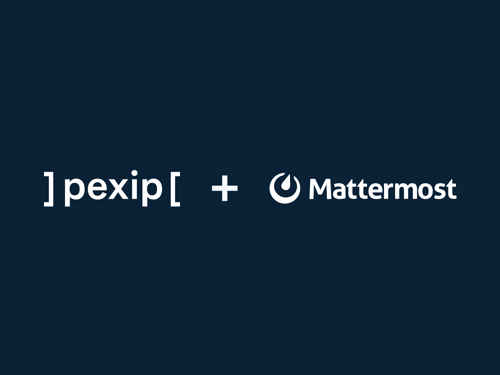It’s a typical Monday morning at Company X. The global workforce has a busy day of virtual meetings, customer engagements, and confidential discussions ahead. Then the unthinkable happens. A massive IT systems failure. And every minute of downtime thereafter is costing the company dearly.
According to research from Aberdeen Group, IT downtime costs companies around $1.55 million annually. It's a situation that often cripples employees’ ability to digitally communicate and collaborate with each other, their customers and their partners – potentially making the losses go far beyond only the financial.
What’s your communication and collaboration back-up plan?
The key to maintaining productivity amidst an outage or other system disruption is to have a collaboration and communication solution in place that will persist no matter the situation at hand. Companies need a solution that enables employees to continue communicating and working with each other throughout the crisis.
“The right collaboration and communication solution can mitigate any potential losses in productivity should your IT systems face an outage. It’s all about ensuring that your productivity levels are crisis-proof because you have a solution in place that can endure any kind of issue,” says Geir Aasen, Chief Information Security Officer, Pexip.
A ‘quick fix’ collaboration solution can raise security concerns
Productivity has taken a more prominent role in business continuity planning in the wake of the pandemic. In 2020, companies were forced to quickly find collaboration solutions that enabled their businesses to continue operating despite a workforce confined to the home office. However, this gave rise to a host of new security issues as we strove to achieve business-as-usual despite Covid’s continuance.
The BCI Emergency Communications Report from 2021 addresses the exact predicament faced by companies in the Covid-era. Many businesses came to grips with the fact that the free communications tools they embraced during the pandemic represented a threat to employee and customer privacy and security. As a result, the more trusted enterprise collaboration tools grew quickly in popularity and the use of free messaging and other services declined sharply.
“In a crisis, you must enable your employees to communicate, even if your primary tool goes down. That means that no matter if the network fails, if your physical location is inaccessible, or if your other IT services go down, you can carry on with the everyday business – taking care of customers and employees from any location, on any device, and in any situation,” says Aasen.
How to ensure seamless operations to prevent productivity losses
Your workforce and their ability to remain productive must be a key component of your business continuity plan. To do this, you need to consider some key capabilities in your primary or secondary communications and collaboration solutions.
Here are three steps you can take to ensure collaboration continuity:
- Assess your current collaboration solution and find out what happens in the event of an outage. Understand what services will be available and what will be unavailable and then evaluate whether this is an acceptable loss or not – both financially and reputationally. If the loss is unacceptable, discuss other options for your business continuity planning with key stakeholders and IT leaders.
- Consider where your collaboration tools are hosted. If your primary collaboration tool is hosted in a shared cloud environment, a move to a private cloud or an on-premise solution can help you reduce risk in the event of an outage or other crisis.
- Ensure a way for your collaboration tools to work entirely offline. This is called air-gapping and it is typically a solution for highly sensitive and confidential meetings – a way to significantly reduce the potential for cyber-attack. This can also work in your favor if systems go down, as you are not reliant on the network to use your air-gapped communications tool.
“Maintaining productivity is often about thinking ahead and having the right solutions in place, before the downtime or outage hits you. It’s also about ensuring smooth transition to a back-up or alternative solution or network during the crisis, which means that your employees must know about it and understand what to do. Taking these steps now will help minimize your productivity losses – keeping your employees productive and your customers happy as you solve the issue,” says Aasen.
Read more about Pexip for Business Continuity
- Meet & collaborate securely
- Business Continuity





